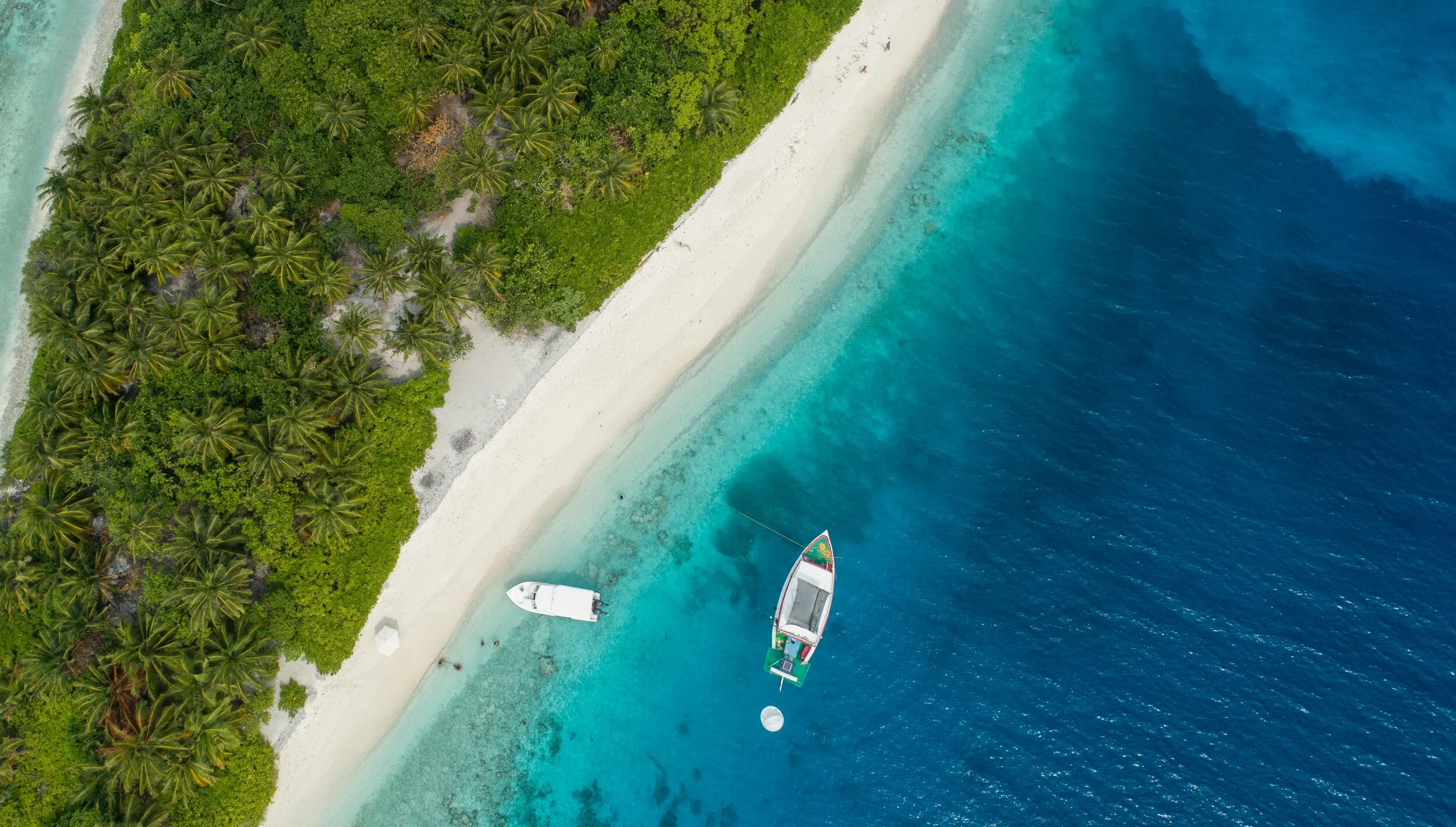Summer Abroad: Where Americans Can Travel
Where Can Americans Travel Right Now? A Country-by-Country Guide
As the fallout of the coronavirus pandemic put international travel on hold earlier this year, Americans looking to add another stamp to their passport postponed their global itineraries and embraced backyard staycations and road trips instead.
Months later, COVID-19 is far from over in the United States but countries around the world are starting to welcome tourists back. Unfortunately, due to an uptick in coronavirus cases and varying levels of restrictions throughout the nation, many countries have blocked Americans from visiting. Most recently, the European Union announced it will reopen its borders to more than a dozen non-EU countries on July 1, but not to the U.S.
Additionally, the State Department imposed a Level 4: Do Not Travel advisory that has been in place since March, instructions "to avoid all international travel due to the global impact of COVID-19."
Since the countries listed below are currently accepting American visitors, those who choose to travel are strongly encouraged to check local government restrictions, rules, and safety measures related to COVID-19 before departure — and take personal comfort levels and health conditions into consideration. It is also recommended to check with local governments for updates before booking travels as the situation is constantly monitored and updates are made daily.
Aruba
Aruba will start welcoming U.S. visitors to its turquoise waters on July 10, according to the Aruba Tourism Authority. This follows the opening of its borders to travelers from the Caribbean (except the Dominican Republic and Haiti), Europe, and Canada starting July 1.
Tourists will have to complete a self-health declaration 72 hours before arriving in Aruba as well as show a negative COVID-19 test or pre-pay for a test to be completed while there. The island, which started reopening outdoor restaurants on May 25, has a cleaning and hygiene certification program for tourism-related businesses focusing on things like plexiglass barriers at desks.
Bahamas
The Bahamas plans to reopen to international commercial travel on July 1, the Bahamas Ministry of Tourism & Aviation shared with Travel + Leisure. The islands first reopened to yachts and private planes on June 15.
Travelers arriving between July 1 and July 7 will have to show a negative COVID-19 test no more than 10 days old. After July 7, that test needs to be no more than seven days old, according to the ministry. Visitors will also have to fill out an electronic Health Visa before their departure.
To reassure tourists, the Bahamas introduced a “Clean & Pristine certification program” for tourism-related businesses like hotels and restaurants.
Several flights are resuming to the Bahamas, according to the tourism ministry, including Southwest, JetBlue, and Delta Air Lines.
Barbados
Barbados is expected to reopen to tourists on July 12. Visitors are encouraged to take a COVID-19 test 72 hours prior to departure and be able to present negative results at the airport. Travelers can also choose to undergo a test at the airport and quarantine until the results are ready.
On June 1, the island reopened retailers, parks, and dining in restaurants, according to the Barbados Government Information Service. On June 15, all businesses were allowed to open and timing restrictions on beaches were eliminated.
Belize
Belize will look to welcome tourists back to its lush landscapes on Aug. 15, requiring visitors to either come with a negative COVID-19 test taken within 72 hours of their departure (and use the “fast lane” at the airport) or undergo testing on arrival, according to the tourist board.
Visitors have to download the Belize Health App before boarding a fight as well as undergo a temperature check at the airport and wear a mask while traveling.
To reassure travelers, Belize introduced a “Tourism Gold Standard Certificate of Recognition” for hotels, which includes online check-in and check-out. Additionally, travelers will find health measures in place at the airport, including sneeze guards, and luggage will be sanitized before being transferred into the terminal.
Bermuda
Bermuda, a British territory, will reopen for all international travel on July 1 and require entering visitors to show a negative COVID-19 test from no more than five days before departure, according to the Bermuda Tourism Authority. Additionally, visitors have to fill out a travel authorization process online and pay a $75 fee. Travelers will also be tested at the airport and have to quarantine at their accommodation until the results are ready, which typically takes four to eight hours.
Visitors will then be tested every few days while on the island and be required to take their temperature twice each day and report it online.
Restaurants on the island have been allowed to reopen and Bermuda's popular beaches are open with physical distancing measures in place. On July 1, the island entered Phase 4, increasing gatherings to 50 people and reopening bars, according to the government.
Cambodia
U.S. and other foreign travelers can take advantage of the amazing temples in Cambodia (hello Angkor Wat), but it will cost them. The country will require visitors to pay a hefty $3,000 travel deposit before entering to cover any potential coronavirus-related costs.
Travelers who test negative while there will only be on the hook for about $165 for the mandatory test, according to the U.S. Embassy in Cambodia.
Those who do go to Cambodia will also be required to show a negative COVID-19 test from no more than 72 hours before traveling, proof of medical insurance coverage for at least $50,000, as well as undergo a COVID-19 test upon arrival and wait in an official facility until the results are ready.
If someone on their arriving flight does test positive for the virus, all passengers have to quarantine for 14 days at a location chosen by Cambodian authorities. If all travelers test negative, they have to self-isolate for two weeks at their lodging.
French Polynesia
French Polynesia, known for the crystal clear waters of Tahiti and Bora Bora, will reopen its borders for international tourism on July 15, including from the U.S.
Tourists coming to the islands — there’s 118 of them — will have to take a COVID-19 test 72 hours before departure and show those negative results before boarding a flight. Anyone who tested positive for the virus more than three weeks before their trip can show an “immunity certificate” as their proof. Travelers will also be required to have a travel insurance policy and people may be randomly tested four days after arrival.
Jamaica
Jamaica reopened to international travel on June 15, requiring arriving passengers to undergo a temperature check and having some undergo a COVID-19 test on arrival, according to the Jamaica Tourist Board.
The island also introduced protocols for tourism industries, including requiring each hotel to designate at least one employee at a time as a “Covid-19 Safety Point Person” to conduct spot checks.
Maldives
Americans looking to take advantage of the luxury of overwater bungalows need look no further than the Maldives, which will reopen to international tourism starting July 15. The island nation will first reopen its uninhabited islands, followed by inhabited islands on Aug. 1.
Visitors won’t have to pay any additional fees or show negative tested results and those who don’t have any symptoms also won’t have to quarantine themselves.
Mexico
The land border between the U.S. and Mexico remains closed and will be until at least July 21.
Several states in Mexico, however, have reopened for tourism, including Quintana Roo (where popular spots like Cancun are located) as well as Jalisco (where Puerto Vallarta is). Mexico has created a color-coded system for each state, according to the U.S. Embassy & Consulates in Mexico, and has placed both Quintana Roo and Jalisco in the “orange” category, allowing hotels and restaurants to open with 50 percent capacity.
La Paz and Loreto in Baja California Sur also welcomed back visitors in June.
Saint Lucia
Saint Lucia reopened to international tourists on June 4. Visitors have to show certified proof of a negative coronavirus test taken within 48 hours of boarding a flight. Businesses on the island have resumed with social distancing measures in place.
Related: Caribbean Islands Are Reopening — Here's What to Know If You've Been Dreaming of the Beach
Serbia
Serbia lifted all COVID-19-related restrictions for both Serbian and foreign citizens, according to the U.S. Embassy in Serbia, allowing people to enter the country. The government also reopened shops, restaurants, cafes, and parks, and lifted restrictions on outdoor gatherings.
Masks are required in closed spaces in Belgrade, according to the Serbian Government’s website.
Serbia also happens to have one of the best under-the-radar wine regions in Europe, perfect for some off-the-beaten path exploring.
Tanzania
The suspension on international flights to Tanzania has been lifted, according to the U.S. Embassy in Tanzania, and travelers are expected to fill out a Health Surveillance Form on the plane.
On June 26, the Tanzania Tourist Board promoted travel to the country with a Facebook video showing health measures like hand washing and temperature checks, and touting Tanzania as a safe and “unforgettable” destination.
Turks and Caicos
Turks and Caicos, a British territory, will reopen to international travel on July 22, welcoming tourists to its more than 40 small islands and pristine beaches. The islands’ tourism board anticipates flight services will resume from the U.S., Canada, and Europe. The Grand Turk Cruise Center will remain closed until August 31.
On June 5, the islands allowed retail businesses to reopen, and restaurants are expected to open July 6.
United Arab Emirates
Dubai, in the United Arab Emirates, will allow foreign tourists to return to the bustling city starting July 7, requiring visitors to download the city’s COVID-19 DXB app and register. Tourists will have to either arrive with a negative COVID-19 test taken no more than four days before departure or get tested at the airport upon arrival, according to the government.
The airport will also implement thermal temperature screenings.
Dubai has allowed services like restaurants to reopen with restrictions.
See the full post at https://www.travelandleisure.com/travel-news/where-can-americans-travel-right-now-a-country-by-country-guide.





